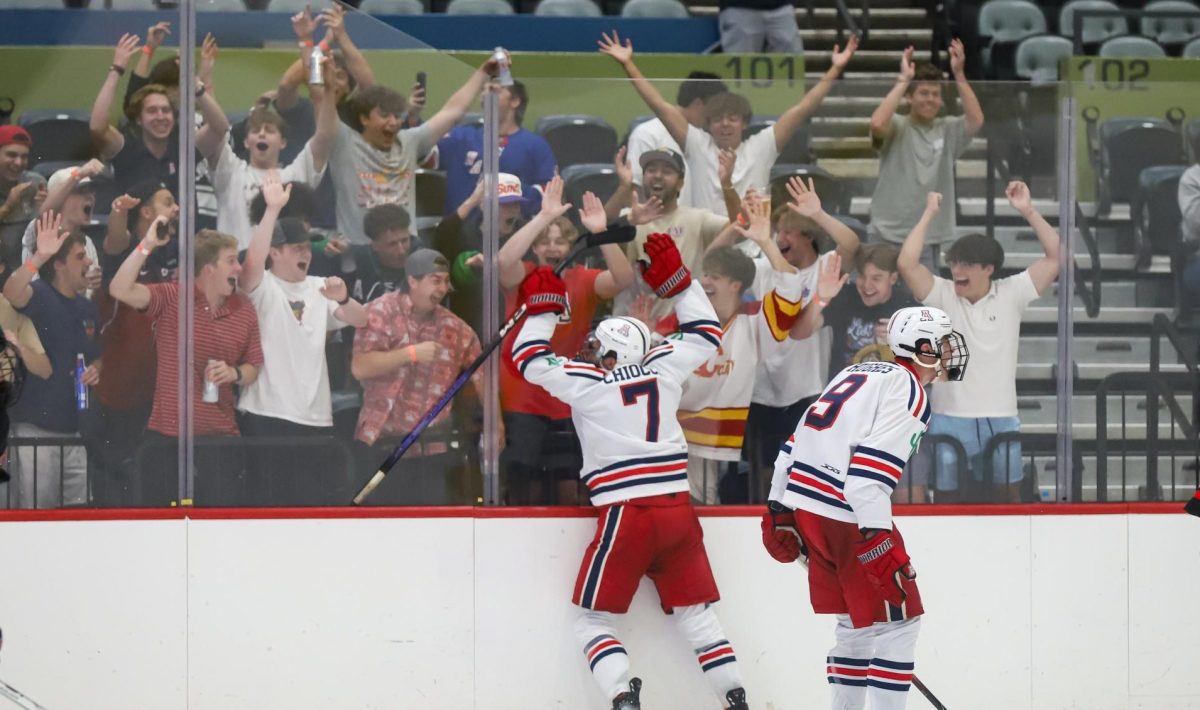Luke Falk lay staring onto the field, unable to move or stand up after his head slammed onto the field. Paramedics rushed on and carted the quarterback off on a stretcher.
The Washington State quarterback suffered a serious looking head injury, but gave the crowd a thumbs up before exiting the field.
Saturday was not a good day in the sport of college football for head injuries, especially to quarterbacks. In fact, it’s been happening a lot this season.
Oklahoma starter Baker Mayfield suffered an apparent head injury against TCU in the second quarter Saturday. TCU linebacker Ty Summers was flagged for targeting and later ejected for the hit. Mayfield did not return.
Syracuse quarterback Eric Dungey was out this weekend with a head injury that he suffered three weeks ago.
For Arizona fans, they know this story all too well. Starting quarterback Anu Solomon has sat out three games over the season because of concussion symptoms. Solomon’s two head injuries occurred from the sophomore attempting to slide face first to avoid opposing defenders.
Arizona receiver Samajie Grant sustained a head injury during the opening play in the Territorial Cup on Saturday and sat out for the remainder of the game.
We haven’t even discussed all the professional football players in the NFL who have travelled the same path. To name a couple: Minnesota Vikings quarterback Teddy Bridgewater and Arizona Cardinals guard Mike Iupati.
Concussions are nothing new in the NFL or in college football. However, this football season has been one of significant injuries to top players.
Chronic Traumatic Encephalopathy, also known as CTE, has gained national attention over the years due to the numerous former football players who have suffered from the disease.
While increased rules have been implemented to protect player safety, it doesn’t appear to be working.
The current protocol in the NFL of immediate sideline assessment involves a neurologic exam, a graduated exercise challenge and the team physician clearing the player. In the NCAA, however, an initial suspected concussion evaluation involves a symptom assessment, physical and neurological exam, cognitive assessment, balance exam and a clinical assessment.
Maryland quarterback Caleb Rowe sustained a concussion according to SB Nation, removed himself from the came and returned a few minutes later.
According to a 2013 survey by the Chronicle of Higher Education, 42 percent of major college football trainers have been pressured by coaches to return an athlete to the field after suffering concussions.
That’s a startling number, one that has no business in the sport of college football.
Arizona head coach Rich Rodriguez knows concussions all too well with his quarterback.
“As coaches, we don’t get in the middle of it,” Rodriguez said in his weekly press conference last week. “There are a lot of people who give opinions, which is kind of comical. All of these other people give their opinion on what a player should do about their injury. One: They are not here to give the medical diagnosis and two: 99 percent of them are not qualified to give a medical diagnosis anyways, as I am not. We aren’t the experts.”
Rodriguez is sending the right message: Head coaches are in no way, shape or form experts on any sort of medical diagnosis.
“[Experts] make the determination whether a guy can go in and play,” Rodriguez said. “That is the way it should be. It should not be in the hands of someone’s opinion or anybody else’s, it’s up to the medical experts. They will always have the student-athlete’s welfare on the top of their list.”
If only every coach could have the same opinion.
Follow Matt Wall on Twitter.















